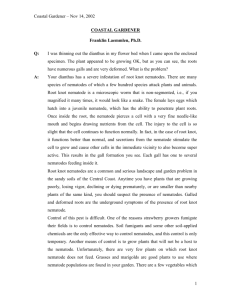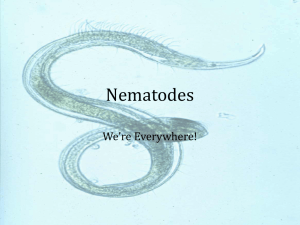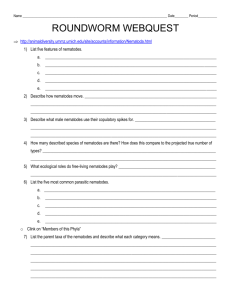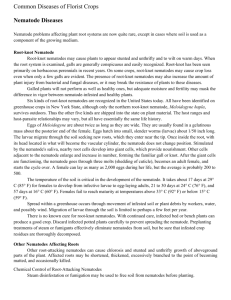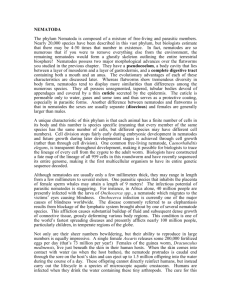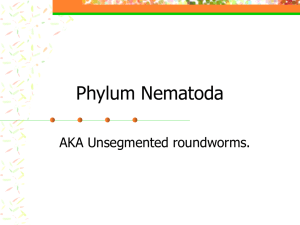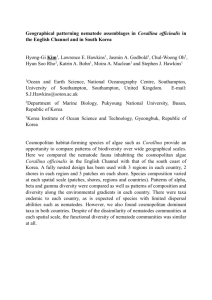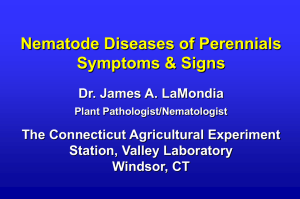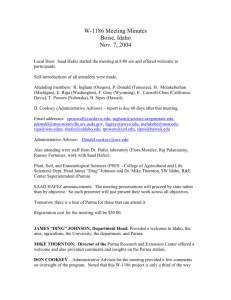Potato Cyst Nematode
advertisement
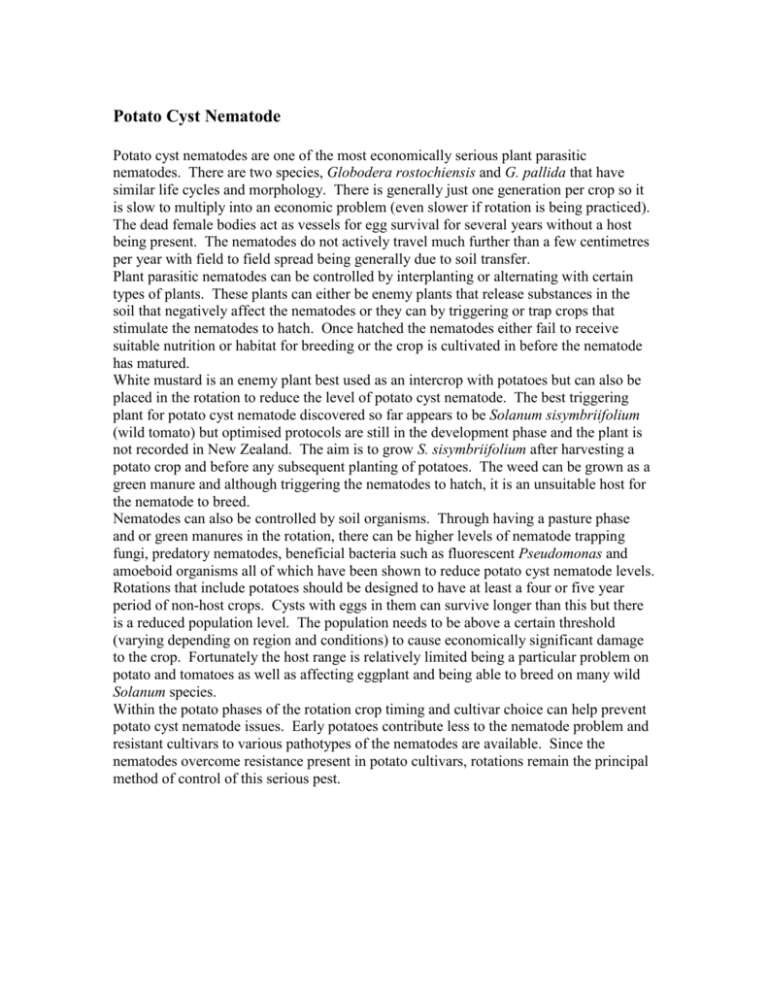
Potato Cyst Nematode Potato cyst nematodes are one of the most economically serious plant parasitic nematodes. There are two species, Globodera rostochiensis and G. pallida that have similar life cycles and morphology. There is generally just one generation per crop so it is slow to multiply into an economic problem (even slower if rotation is being practiced). The dead female bodies act as vessels for egg survival for several years without a host being present. The nematodes do not actively travel much further than a few centimetres per year with field to field spread being generally due to soil transfer. Plant parasitic nematodes can be controlled by interplanting or alternating with certain types of plants. These plants can either be enemy plants that release substances in the soil that negatively affect the nematodes or they can by triggering or trap crops that stimulate the nematodes to hatch. Once hatched the nematodes either fail to receive suitable nutrition or habitat for breeding or the crop is cultivated in before the nematode has matured. White mustard is an enemy plant best used as an intercrop with potatoes but can also be placed in the rotation to reduce the level of potato cyst nematode. The best triggering plant for potato cyst nematode discovered so far appears to be Solanum sisymbriifolium (wild tomato) but optimised protocols are still in the development phase and the plant is not recorded in New Zealand. The aim is to grow S. sisymbriifolium after harvesting a potato crop and before any subsequent planting of potatoes. The weed can be grown as a green manure and although triggering the nematodes to hatch, it is an unsuitable host for the nematode to breed. Nematodes can also be controlled by soil organisms. Through having a pasture phase and or green manures in the rotation, there can be higher levels of nematode trapping fungi, predatory nematodes, beneficial bacteria such as fluorescent Pseudomonas and amoeboid organisms all of which have been shown to reduce potato cyst nematode levels. Rotations that include potatoes should be designed to have at least a four or five year period of non-host crops. Cysts with eggs in them can survive longer than this but there is a reduced population level. The population needs to be above a certain threshold (varying depending on region and conditions) to cause economically significant damage to the crop. Fortunately the host range is relatively limited being a particular problem on potato and tomatoes as well as affecting eggplant and being able to breed on many wild Solanum species. Within the potato phases of the rotation crop timing and cultivar choice can help prevent potato cyst nematode issues. Early potatoes contribute less to the nematode problem and resistant cultivars to various pathotypes of the nematodes are available. Since the nematodes overcome resistance present in potato cultivars, rotations remain the principal method of control of this serious pest.

